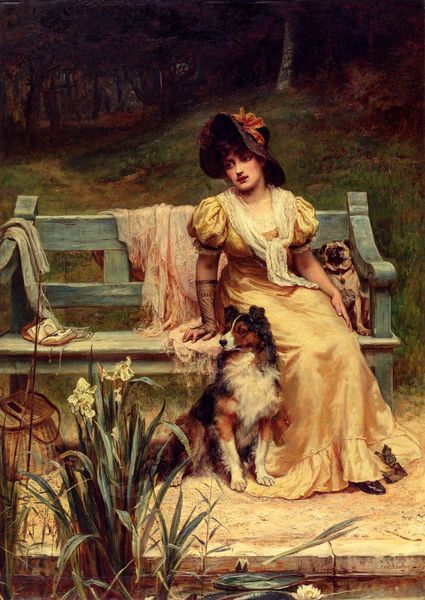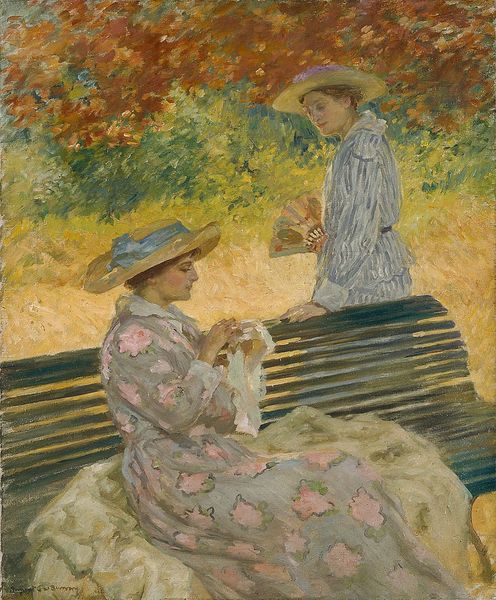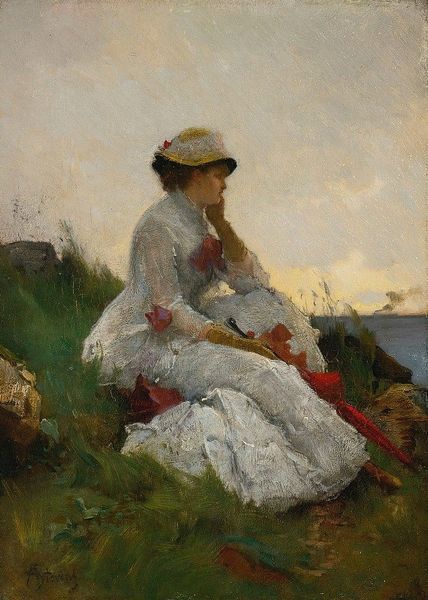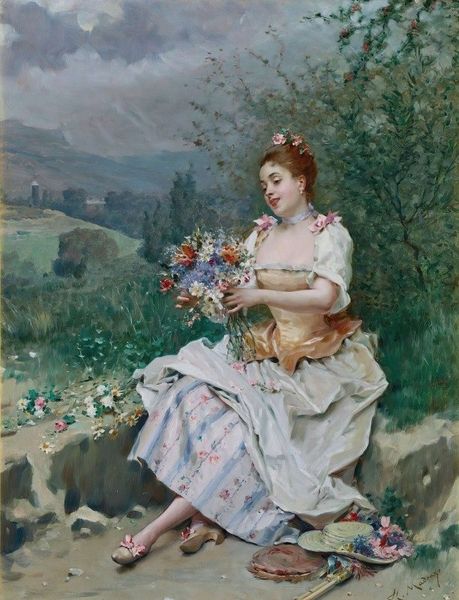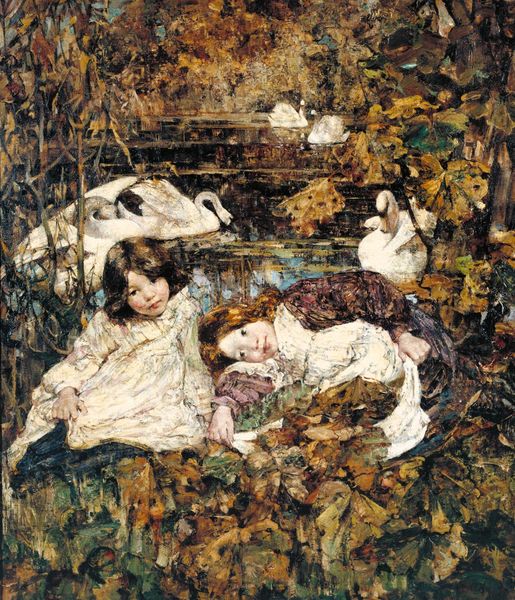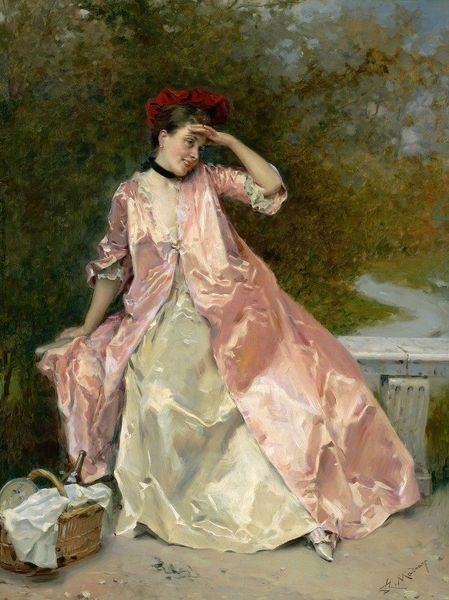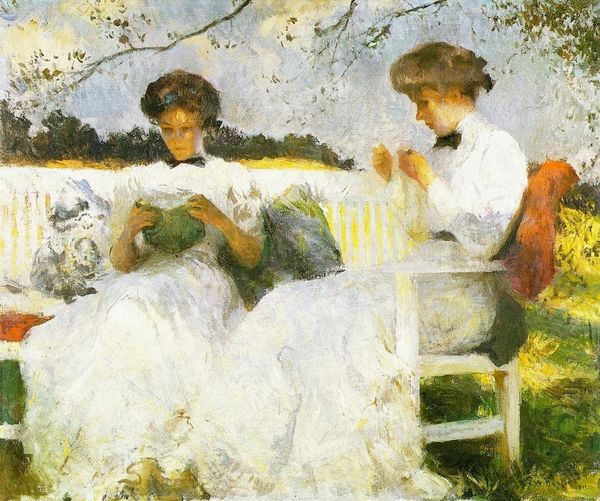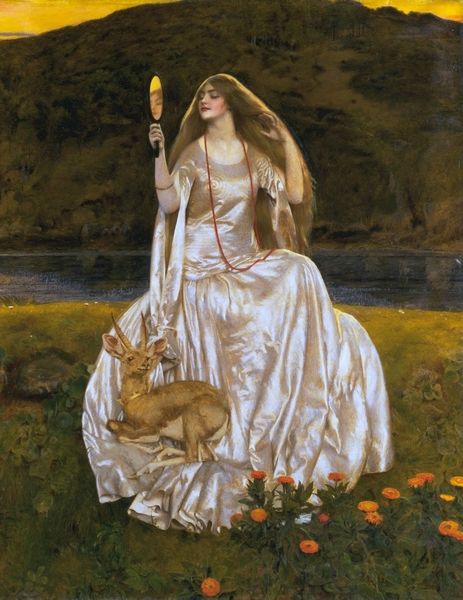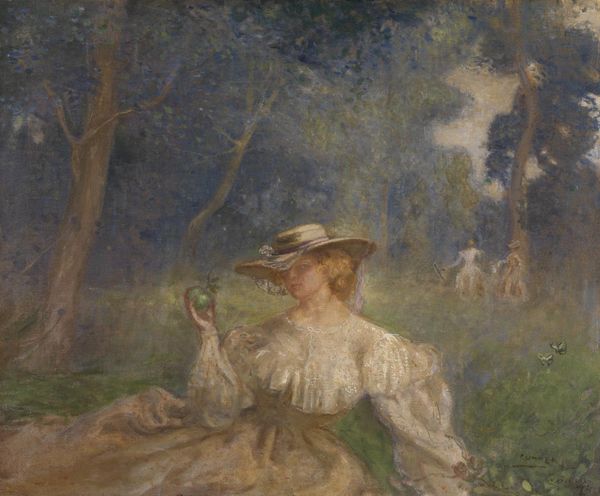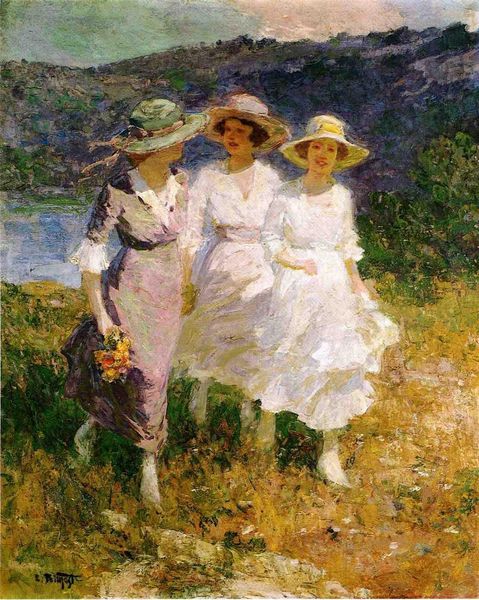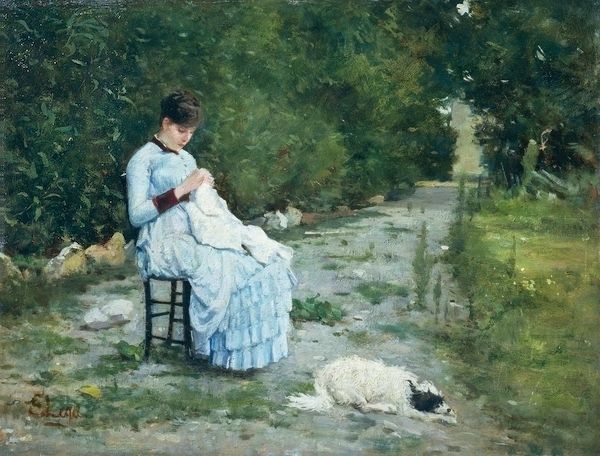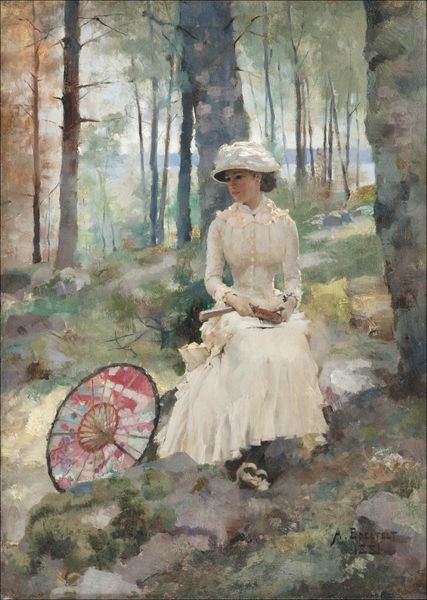
Copyright: Public Domain: Artvee
Curator: "On the Dunes," painted circa 1900-1910 by James Jebusa Shannon. Note the plein-air approach, capturing the effects of natural light. What’s your immediate reaction? Editor: Tranquil. The hazy light, the billowing clouds... there's an atmosphere of dreamy escape, yet there is a sense of narrative because of the characters. Curator: Indeed. Observe how Shannon structures the composition; the figures are centrally located, acting as a kind of visual anchor amidst the somewhat ambiguous background. The diagonal slope guides the eye from the foreground to the implied horizon, using impressionistic loose brushwork and tone. Editor: Yes, look at how Shannon uses the symbol of the book; this represents knowledge and introspection, but I also read an emphasis on the intimacy between these figures, sharing an intellectual, and perhaps emotional moment. Is there an implication that the book binds them together somehow? Curator: I agree the book and how the figures attend to each other does draw them together. From a formal perspective, the contrasting patterns and textures of the dresses, which offer both detail and softness, is balanced by the relative lack of definition in the landscape beyond. It's all carefully orchestrated. Editor: The dog! Perhaps a symbol of loyalty, but here, it rests, seemingly untroubled, suggesting domesticity and a pastoral sort of ease. One must consider what the animal resting may represent and whether its appearance has relevance to the content within the book, which we cannot see. Curator: Interesting observation. The artist's skillful use of oil paint to evoke the light on fabric or the softness of the clouds draws my attention, highlighting contrasts in texture with form; for me that’s where the deeper reading lies, it’s really about visuality. Editor: Perhaps, but those languid details of domesticity and intellectual sharing are rich with suggestions about turn-of-the-century female experience too. Overall the symbolism is light and airy as if the artist didn't want anything heavy weighing down on the message within this shared and reflective moment. Curator: Thank you, this offers another way of approaching "On The Dunes" and seeing that even its medium enhances that. Editor: Likewise. This work has made me curious about how artists then captured such moments, finding symbols in the subtle exchanges they depict.
Comments
No comments
Be the first to comment and join the conversation on the ultimate creative platform.
